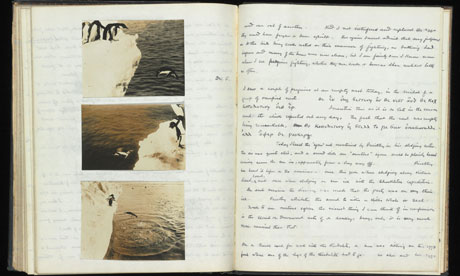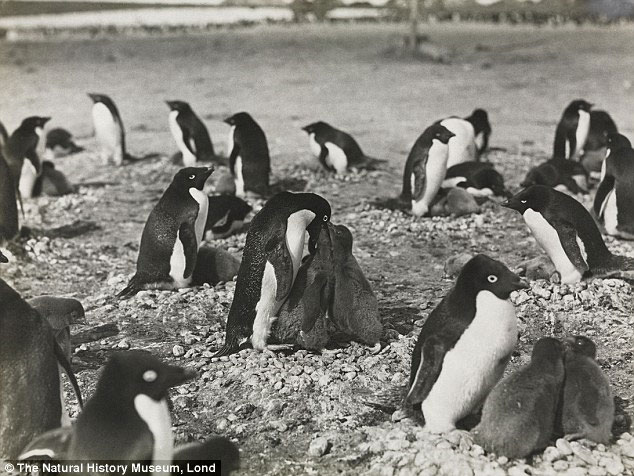Shocking revelations about penguin's sex life
Recently, experts have found what remains of an 'extremely important' study of the sex of the Adelie penguin that was conducted 100 years ago, during the expedition to Antarctica due to Captain Robert Falcon Scott leads the way. It is worth mentioning that the content contained in it actually caused "stunned" for the scientific world.
The sight of an adult male Adelie penguin trying to mate with his dead child caused George Murray Levick, a Edward VII scientist and a member of the 1910-1913 expedition team. Scott, very surprised. Obsession comes not only from blizzards or cold cuts, but also from 'perverted' sexual behavior in Adelie.

George Murray Levick's book "Shocking" (Photo: R.Kossow / NHM)
But that's not all. Levick spent the summer in Antarctica in 1911-1912 to observe the habitat of Adelie penguins in Cape Adare. So far, he is considered the only person to study their entire reproductive cycle. During that time, he witnessed many scenes of males 'having sex' with each other and with their dead or even dead children a year ago. 'Sexual intercourse' is forced on children, young children and then killing them often.
Levick blamed the 'incredible corrupt behavior' in the 'thugs' males in an article in Greek. Later, he published his work in English entitled 'The Natural History of Adelie Penguins' . However, the part about the shocking sex life was removed.

In fact, scientists have long discovered that problem but have to wait another 50 years for a thorough study by this time, Levick's book was lost.
Recently, a copy named: 'The sexual habits of Adelie penguins' was found.
The book records the frequency of sexual activity and misbehavior including necrophilia (prostitution with corpses), sexual coercion, abuse of young children and homosexual relationships, some even injured even killed after sex. Even Levick was completely shocked by his findings, said Douglas Russell, an expert at the British Museum of Natural History.
- The pair of gay penguins adopted an egg after a long time to ... boulder incubation
- How do penguins differentiate?
- Mother penguins drop eggs, the whole herd rushes to the rescue
- Homosexual penguins 'kidnapping' penguin child to raise
- Pair of gay penguins celebrating 10 years of living together
- Penguins march in Hai Duong park, Japan
- A couple of penguins hold hands on the sea causing storms
- New Zealand built a tunnel for penguins
- Losing children, double crazy penguins kill the same kind
- Shocking disclosure of hygiene on aircraft
- Antarctic penguins fell seriously
- The truth behind the story The penguin passed 8,000km every year to visit the benefactor.
 Animal 'suffering' after hibernation
Animal 'suffering' after hibernation Why do goats climb well?
Why do goats climb well? Scientists were surprised to see chimpanzees eating turtles
Scientists were surprised to see chimpanzees eating turtles Giant catfish died deadly due to drought in Thailand
Giant catfish died deadly due to drought in Thailand